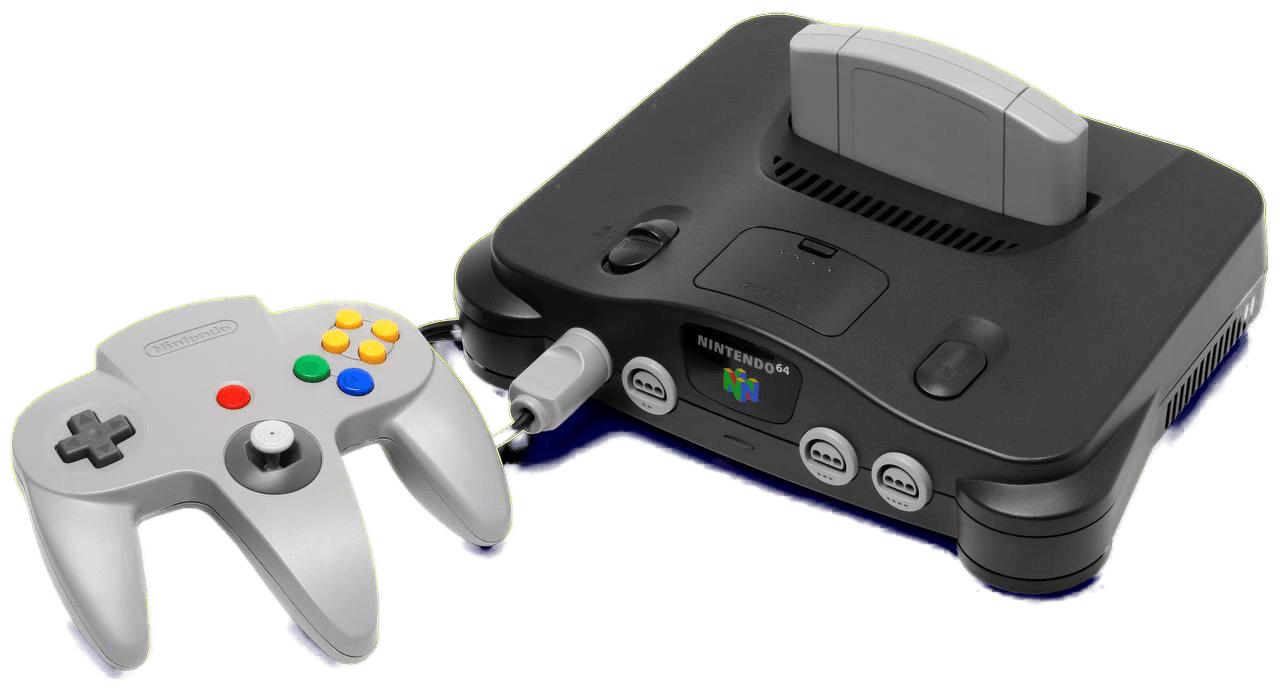
The Nintendo 64 (N64), released in 1996, marked Nintendo’s leap into the world of 3D gaming. Named for its 64-bit architecture, the console represented a significant jump from the 16-bit SNES, introducing fully rendered 3D environments and analog control. Nintendo partnered with Silicon Graphics to develop the system’s custom chipset, resulting in powerful—but somewhat difficult to develop for—hardware. Unlike its competitors, Sony’s PlayStation and Sega’s Saturn, Nintendo opted to continue using cartridges instead of CD-ROMs, favoring faster load times and durability, but limiting storage capacity and increasing costs for third-party developers.
The N64 delivered a smaller game library than previous Nintendo systems, but it was packed with iconic and influential titles. Super Mario 64 redefined platforming in 3D and is still considered one of the most important video games ever made. The Legend of Zelda: Ocarina of Time brought cinematic storytelling and immersive open-world design to consoles, while GoldenEye 007 revolutionized first-person shooters on home systems with its multiplayer mode. Other standout titles included Mario Kart 64, Banjo-Kazooie, Wave Race 64, Star Fox 64, and Super Smash Bros.
Selling over 32 million units worldwide, the N64 was less commercially successful than its predecessors, but its innovations had a massive impact on the future of gaming. Its analog stick, rumble features, and 3D gameplay mechanics set industry standards. While limited third-party support and the decision to stick with cartridges are often cited as strategic missteps, the Nintendo 64 is remembered as a bold, experimental console that delivered some of the most beloved and groundbreaking games of all time.
Nintendo 64 Technical Specifications
| Component | Specification |
|---|---|
| CPU | 64-bit NEC VR4300 @ 93.75 MHz (MIPS RISC architecture) |
| Graphics | SGI Reality Coprocessor (62.5 MHz) with texture mapping, Z-buffering, etc. |
| Resolution | 320x240 standard, up to 640x480 with Expansion Pak |
| Sound | 16-bit stereo audio (via software) |
| Media | ROM cartridges (up to 64MB capacity) |
| Memory | 4MB RDRAM (expandable to 8MB with Expansion Pak) |
| Controllers | 3-pronged controller with analog stick and optional Rumble Pak |
| Release Date | 1996 (Japan and North America), 1997 (Europe and Australia) |